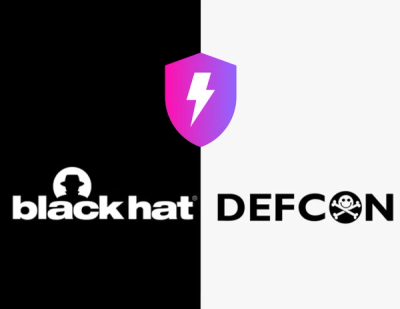
Security News
Meet Socket at Black Hat and DEF CON 2025 in Las Vegas
Meet Socket at Black Hat & DEF CON 2025 for 1:1s, insider security talks at Allegiant Stadium, and a private dinner with top minds in software supply chain security.
nativescript-push-notifications
Advanced tools
Receive push notifications in your NativeScript app on Android and iOS.
This plugin is deprecated. Feel free to use the Firebase Plugin for implementing push notifications in your NativeScript app. If you already have an app that use the Push Plugin, read the migrate-to-firebase doc for initial guidance.
The code for the Push Plugin for NativeScript.
In the Command prompt / Terminal navigate to your application root folder and run:
tns plugin add nativescript-push-notifications
See the Android Configuration for using Firebase Cloud Messaging for information about how to add Firebase to your project.
Edit the package.json file in the root of application, by changing the bundle identifier to match the Firebase's project package name. For example:
"id": "org.nativescript.PushNotificationApp"
Edit the app/App_Resources/Android/app.gradle file of your application, by changing the application ID to match the bundle identifier from the package.json. For example:
android {
// ...
defaultConfig {
applicationId = "org.nativescript.PushNotificationApp"
}
// ...
}
Go to the application folder and add the Android platform to the application
tns platform add android
Add the google-settings.json file with the FCM configuration to the app/App_Resources/Android folder in your app. If this file is not added, building the app for android will fail.
The plugin will default to version 12.0.1 of the firebase-messaging SDK. If you need to change the version, you can add a project ext property firebaseMessagingVersion:
// in the root level of /app/App_Resources/Android/app.gradle:
project.ext {
firebaseMessagingVersion = "+" // OR the version you wish
}
Ensure you have set up an App in your Apple Developer account, with Push Notifications enabled and configured. More on this in the Apple's AddingCapabilities documentation > Configuring Push Notifications section.
Edit the package.json file in the root of application, by changing the bundle identifier to match the App ID. For example:
"id": "org.nativescript.PushNotificationApp"
Go to the application folder and add the iOS platform to the application
tns build ios
Go to (application folder)/platforms/ios and open the XCode project. Enable Push Notifications in the project Capabilities options. In case you don't have XCode, go to (application folder)/platforms/ios/(application folder name) , find *.entitlements file and add to it aps-environment key and its value as shown below:
<plist version="1.0">
<dict>
<key>aps-environment</key>
<string>development</string>
</dict>
</plist>
Add code in your view model or component to subscribe and receive messages (don't forget to enter your Firebase Cloud Messaging Sender ID in the options of the register method):
import * as pushPlugin from "nativescript-push-notifications";
private pushSettings = {
senderID: "<ENTER_YOUR_PROJECT_NUMBER>", // Required: setting with the sender/project number
notificationCallbackAndroid: (stringifiedData: String, fcmNotification: any) => {
const notificationBody = fcmNotification && fcmNotification.getBody();
this.updateMessage("Message received!\n" + notificationBody + "\n" + stringifiedData);
}
};
pushPlugin.register(pushSettings, (token: String) => {
alert("Device registered. Access token: " + token);;
}, function() { });
var pushPlugin = require("nativescript-push-notifications");
var pushSettings = {
senderID: "<ENTER_YOUR_PROJECT_NUMBER>", // Required: setting with the sender/project number
notificationCallbackAndroid: function (stringifiedData, fcmNotification) {
var notificationBody = fcmNotification && fcmNotification.getBody();
_this.updateMessage("Message received!\n" + notificationBody + "\n" + stringifiedData);
}
};
pushPlugin.register(pushSettings, function (token) {
alert("Device registered. Access token: " + token);
}, function() { });
Run the app on the phone or emulator:
tns run android
The access token is written in the console and displayed on the device after the plugin sucessfully subscribes to receive notifications. When a notification comes, the message will be displayed in the notification area if the app is closed or handled directly in the notificationCallbackAndroid callback if the app is open.
Add code in your view model or component to subscribe and receive messages:
import * as pushPlugin from "nativescript-push-notifications";
const iosSettings = {
badge: true,
sound: true,
alert: true,
interactiveSettings: {
actions: [{
identifier: 'READ_IDENTIFIER',
title: 'Read',
activationMode: "foreground",
destructive: false,
authenticationRequired: true
}, {
identifier: 'CANCEL_IDENTIFIER',
title: 'Cancel',
activationMode: "foreground",
destructive: true,
authenticationRequired: true
}],
categories: [{
identifier: 'READ_CATEGORY',
actionsForDefaultContext: ['READ_IDENTIFIER', 'CANCEL_IDENTIFIER'],
actionsForMinimalContext: ['READ_IDENTIFIER', 'CANCEL_IDENTIFIER']
}]
},
notificationCallbackIOS: (message: any) => {
alert("Message received!\n" + JSON.stringify(message));
}
};
pushPlugin.register(iosSettings, (token: String) => {
alert("Device registered. Access token: " + token);
// Register the interactive settings
if(iosSettings.interactiveSettings) {
pushPlugin.registerUserNotificationSettings(() => {
alert('Successfully registered for interactive push.');
}, (err) => {
alert('Error registering for interactive push: ' + JSON.stringify(err));
});
}
}, (errorMessage: any) => {
alert("Device NOT registered! " + JSON.stringify(errorMessage));
});
var pushPlugin = require("nativescript-push-notifications");
var iosSettings = {
badge: true,
sound: true,
alert: true,
interactiveSettings: {
actions: [{
identifier: 'READ_IDENTIFIER',
title: 'Read',
activationMode: "foreground",
destructive: false,
authenticationRequired: true
}, {
identifier: 'CANCEL_IDENTIFIER',
title: 'Cancel',
activationMode: "foreground",
destructive: true,
authenticationRequired: true
}],
categories: [{
identifier: 'READ_CATEGORY',
actionsForDefaultContext: ['READ_IDENTIFIER', 'CANCEL_IDENTIFIER'],
actionsForMinimalContext: ['READ_IDENTIFIER', 'CANCEL_IDENTIFIER']
}]
},
notificationCallbackIOS: function (data) {
alert("message", "" + JSON.stringify(data));
}
};
pushPlugin.register(iosSettings, function (data) {
alert("Device registered. Access token" + data);
// Register the interactive settings
if(iosSettings.interactiveSettings) {
pushPlugin.registerUserNotificationSettings(function() {
alert('Successfully registered for interactive push.');
}, function(err) {
alert('Error registering for interactive push: ' + JSON.stringify(err));
});
}
}, function() { });
Run the app on the phone or simulator:
tns run ios
[HINT] Install the pusher app to send notifications to the device being debugged on. In the 'device push token' field paste the device access token generated in the {N} CLI / XCode debug console after launching the app.
| Option | Platform | Type | Description |
|---|---|---|---|
| senderID | Android | String | The Sender ID for the FCM project. This option is required for Android. |
| notificationCallbackAndroid | Android | Function | Callback to invoke, when a push is received on Android. |
| badge | iOS | Boolean | Enable setting the badge through Push Notification. |
| sound | iOS | Boolean | Enable playing a sound. |
| alert | iOS | Boolean | Enable creating a alert. |
| clearBadge | iOS | Boolean | Enable clearing the badge on push registration. |
| notificationCallbackIOS | iOS | Function | Callback to invoke, when a push is received on iOS. |
| interactiveSettings | iOS | Object | Interactive settings for use when registerUserNotificationSettings is used on iOS. |
The interactiveSettings object for iOS can contain the following:
| Option | Type | Description |
|---|---|---|
| actions | Array | A list of iOS interactive notification actions. |
| categories | Array | A list of iOS interactive notification categories. |
The actions array from the iOS interactive settings contains:
| Option | Type | Description |
|---|---|---|
| identifier | String | Required. String identifier of the action. |
| title | String | Required. Title of the button action. |
| activationMode | String | Set to either "foreground" or "background" to launch the app in foreground/background and respond to the action. |
| destructive | Boolean | Enable if the action is destructive. Will change the action color to red instead of the default. |
| authenticationRequired | Boolean | Enable if the device must be unlocked to perform the action. |
| behavior | String | Set if the action has a different behavior - e.g. text input. |
The categories array from the iOS interactive settings contains:
| Option | Type | Description |
|---|---|---|
| identifier | String | Required. String identifier of the category. |
| actionsForDefaultContext | Array | Required. Array of string identifiers of actions. |
| actionsForMinimalContext | Array | Required. Array of string identifiers of actions. |
For more information about iOS interactive notifications, please visit the Apple Developer site
var settings = {
badge: true,
sound: true,
alert: true,
interactiveSettings: {
actions: [{
identifier: 'READ_IDENTIFIER',
title: 'Read',
activationMode: "foreground",
destructive: false,
authenticationRequired: true
}, {
identifier: 'CANCEL_IDENTIFIER',
title: 'Cancel',
activationMode: "foreground",
destructive: true,
authenticationRequired: true
}],
categories: [{
identifier: 'READ_CATEGORY',
actionsForDefaultContext: ['READ_IDENTIFIER', 'CANCEL_IDENTIFIER'],
actionsForMinimalContext: ['READ_IDENTIFIER', 'CANCEL_IDENTIFIER']
}]
},
notificationCallbackIOS: function(message) {
alert(JSON.stringify(message));
}
};
pushPlugin.register(settings,
// Success callback
function(token){
// Register the interactive settings
if(settings.interactiveSettings) {
pushPlugin.registerUserNotificationSettings(function() {
alert('Successfully registered for interactive push.');
}, function(err) {
alert('Error registering for interactive push: ' + JSON.stringify(err));
});
}
},
// Error Callback
function(error){
alert(error.message);
}
);
register method| Parameter | Platform | Type | Description |
|---|---|---|---|
| successCallback | iOS | Function | Called when app is successfully unsubscribed. Has one object parameter with the result. |
| successCallback | Android | Function | Called when app is successfully unsubscribed. Has one string parameter with the result. |
| errorCallback | Android | Function | Called when app is NOT successfully unsubscribed. Has one parameter containing the error. |
| options | Android | Function | Called when app is NOT successfully unsubscribed. Has one parameter containing the error. |
pushPlugin.unregister(
// Success callback
function(result) {
alert('Device unregistered successfully');
},
// Error Callback
function(errorMessage) {
alert(errorMessage);
},
// The settings from the registration phase
settings
);
| Parameter | Platform | Type | Description |
|---|---|---|---|
| successCallback | iOS/Android | Function | Called with one boolean parameter containing the result from the notifications enabled check. |
pushPlugin.areNotificationsEnabled(function(areEnabled) {
alert('Are Notifications enabled: ' + areEnabled);
});
notificationCallbackAndroid registration option instead| Parameter | Type | Description |
|---|---|---|
| stringifiedData | String | A string containing JSON data from the notification |
| fcmNotification | Object | iOS/Android |
The fcmNotification object contains the following methods:
| Method | Returns |
|---|---|
| getBody() | String |
| getBodyLocalizationArgs() | String[] |
| getBodyLocalizationKey() | String |
| getClickAction() | String |
| getColor() | String |
| getIcon() | String |
| getSound() | String |
| getTag() | String |
| getTitle() | String |
| getTitleLocalizationArgs() | String[] |
| getTitleLocalizationKey() | String |
register again or add some native code to obtain the token from FCM| Parameter | Type | Description |
|---|---|---|
| callback | Function | Called with no arguments. |
pushPlugin.onTokenRefresh(function() {
alert("new token obtained");
});
| Parameter | Type | Description |
|---|---|---|
| successCallback | Function | Called when app is successfully unsubscribed. Has one object parameter with the result. |
| errorCallback | Function | Called when app is NOT successfully unsubscribed. Has one parameter containing the error. |
In case the application doesn't work as expected. Here are some things you can verify
When the application is started using tns run android (i.e. in debug mode with livesync) some background notifications might not be received correctly. This happens because the app is not started in a normal way for debugging and the resume from background happens differently. To receive all notifications correctly, stop the app (swipe it away it from the recent apps list) and start it again by tapping the app icon on the device.
Thе google-services plugin is added automatically. If this fails, you can try adding it manually:
platforms/android/ folder and locate the application-level build.gradle filegoogle-services plugin to the list of other dependencies in your app's build.gradle file
dependencies {
// ...
classpath "com.google.gms:google-services:3.0.0"
// ...
}
build.gradle file to enable the Gradle plugin
apply plugin: 'com.google.gms.google-services'
Ensure that the AndroidManifest.xml located at platforms/android/build/... (do not add it in your "App_Resources/Android/AndroidManifest.xml" file) contains the following snippets for registering the GCM listener:
<activity android:name="com.telerik.pushplugin.PushHandlerActivity"/>
<receiver
android:name="com.google.android.gms.gcm.GcmReceiver"
android:exported="true"
android:permission="com.google.android.c2dm.permission.SEND" >
<intent-filter>
<action android:name="com.google.android.c2dm.intent.RECEIVE" />
<category android:name="com.pushApp.gcm" />
</intent-filter>
</receiver>
<service
android:name="com.telerik.pushplugin.PushPlugin"
android:exported="false" >
<intent-filter>
<action android:name="com.google.android.c2dm.intent.RECEIVE" />
</intent-filter>
</service>
Ensure that the AndroidManifest.xml located at platforms/android/build/... contains the following permissions for push notifications:
<uses-permission android:name="android.permission.WAKE_LOCK" />
<uses-permission android:name="com.google.android.c2dm.permission.RECEIVE" />
The nativescript-push-notifications module for Android relies on the Firebase Cloud Messaging (FCM) SDK. In the steps below you will be guided to complete a few additional steps to prepare your Android app to receive push notifications from FCM.
Add the google-services.json file
To use FCM, you need this file. It contains configurations and credentials for your Firebase project. To obtain this follow the instructions for adding Firebase to your project from the official documentation. Scroll down to the Manually add Firebase section.
Place the file in your app's App_Resources/Android folder
Obtain the FCM Server Key (optional)
This key is required to be able to send programmatically push notifications to your app. You can obtain this key from your Firebase project.
The plugin allows for handling data, notification, and messages that contain both payload keys which for the purposes of this article are reffered to as mixed. More specifics on these messages are explained here.
The plugin extends the FirebaseMessagingService and overrides its onMessageReceived callback. In your app you need to use the notificationCallbackAndroid setting when calling the register method of the plugin.
The behavior of the callback in the module follows the behavior of the FCM service.
The notificationCallbackAndroid method of the plugin is called each time a data notification is received.
If the app is stopped or suspended, NO notification is constructed and placed in the tray. Tapping the app icon launches the app and invokes the notificationCallbackAndroid callback where you will receive the notification data.
If the app is active and in foreground, the notificationCallbackAndroid callback is invoked immediately with the notification data (fcmNotification).
If the app is active and in foreground, it invokes the notificationCallbackAndroid callback with two arguments (stringifiedData, fcmNotification).
If the app is in background, a notification is put in the tray. When tapped, it launches the app, but does not invoke the notificationCallbackAndroid callback.
Mixed messages are messages that contain in their load both data and notification keys. When such message is received:
notificationCallbackAndroid callback is invoked with parameters (stringifiedData, fcmNotification)notificationCallbackAndroid callback is not invoked. A notification is placed in the system tray. If the notification in the tray is tapped, the data part of the mixed message is available in the extras of the intent of the activity and are available in the respective application event of NativeScript.Example of handling the data part in the application resume event (e.g. the app was brought to the foreground from the notification):
application.on(application.resumeEvent, function(args) {
if (args.android) {
var act = args.android;
var intent = act.getIntent();
var extras = intent.getExtras();
if (extras) {
// for (var key in extras) {
// console.log(key + ' -> ' + extras[key]);
// }
var msg = extras.get('someKey');
}
}
});
Depending on the notification event and payload, the notificationCallbackAndroid callback is invoked with two arguments.
stringifiedData - String. A stringified JSON representation of the data value in the notification payload.fcmNotification - RemoteMessage.Notification. A representation of the RemoteMessage.Notification class which can be accessed according to its public methods. This parameter is available in case the callback was called from a message with a notification key in the payload.The plugin automatically handles some keys in the data object like message, title, color, smallIcon, largeIcon and uses them to construct a notification entry in the tray.
Custom default color and icon for notification messages can be set in the AndroidManifest.xml inside the application directive:
<meta-data
android:name="com.google.firebase.messaging.default_notification_icon"
android:resource="@drawable/ic_stat_ic_notification" />
<meta-data
android:name="com.google.firebase.messaging.default_notification_color"
android:resource="@color/colorAccent" />
For more info visit the Edit the app manifest article.
We love PRs! Check out the contributing guidelines. If you want to contribute, but you are not sure where to start - look for issues labeled help wanted.
Please, use github issues strictly for reporting bugs or requesting features. For general questions and support, check out Stack Overflow or ask our experts in NativeScript community Slack channel.
FAQs
Receive push notifications in your NativeScript app on Android and iOS.
The npm package nativescript-push-notifications receives a total of 25 weekly downloads. As such, nativescript-push-notifications popularity was classified as not popular.
We found that nativescript-push-notifications demonstrated a not healthy version release cadence and project activity because the last version was released a year ago. It has 9 open source maintainers collaborating on the project.
Did you know?

Socket for GitHub automatically highlights issues in each pull request and monitors the health of all your open source dependencies. Discover the contents of your packages and block harmful activity before you install or update your dependencies.

Security News
Meet Socket at Black Hat & DEF CON 2025 for 1:1s, insider security talks at Allegiant Stadium, and a private dinner with top minds in software supply chain security.

Security News
CAI is a new open source AI framework that automates penetration testing tasks like scanning and exploitation up to 3,600× faster than humans.

Security News
Deno 2.4 brings back bundling, improves dependency updates and telemetry, and makes the runtime more practical for real-world JavaScript projects.